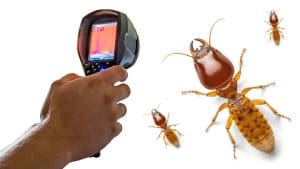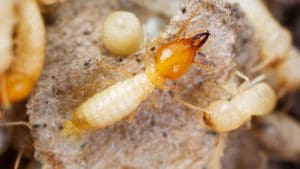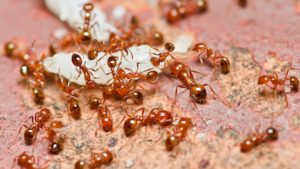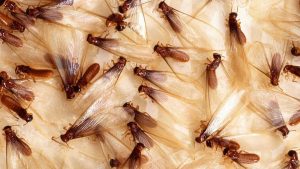If you’re from Louisiana termites are no stranger to you. Every year from March to July, termites begin to swarm throughout the state. If you’ve seen a swarm near your home in Baton Rouge, check out our list below of the types of termites that swarm in our city to look at what you may be dealing with. Narrowing down the termite species helps pest control professionals like us determine the most appropriate treatment path.
Eastern Subterranean Termites
Eastern subterranean termites are found throughout the southeast and pose a severe threat to the Baton Rouge area. The species are attracted to wet lowlands, along streams and lakes. They live in colonies featuring about 60,000 to one million termites. These colonies primarily feed on dead wood and occasionally infest living trees or shrubs. Eastern Subterranean termites also feed on human-made structures like homes, docks, buildings and more.
Any structure that has a direct wood-to-ground contact near moist soil is vulnerable. In Baton Rouge, they typically swarm from February to May. Winter termite swarms are occasionally spotted in heated buildings. These pests usually swarm during the day or after rain on a warm day.
Drywood Termites
Drywood termites are found in southern states, like Louisiana. In most cases, they are identified by piles of fecal pellets located in or around the structure. They feed on wood and other cellulose materials. Drywood colonies create colonies deep within wood structures. They don’t need a connection to the soil to survive and can survive with very little moisture. When they have matured, the reproductive termites in their colony fly out to create new colonies. They begin swarming during warm temperatures or after heavy rains.
Formosan Termites
Formosan termites initially made their way into the United States from China through ships and ports. These pests have spread throughout the south since the 1940s, and now thousands of colonies call Baton Rouge home. Unlike other subterranean termites, Formosan termites don’t need soil contact to survive. These termites build aboveground nests, as long as there are optimal temperature and moisture nearby. They’ve been known to nest in walls and attics.
Formosan termites are among the most destructive termite species in the United States and form some of the most significant colonies of any species. In many cases, their colonies can cause massive structural damage within six months. They typically swarm during the night in late spring. Swarming behaviors do vary based on local temperatures and weather conditions.
If you are dealing with a termite infestation in your home, contact Arrow Termite & Pest Control today for a custom solution to suit your needs. Click here to receive your first inspection free.





